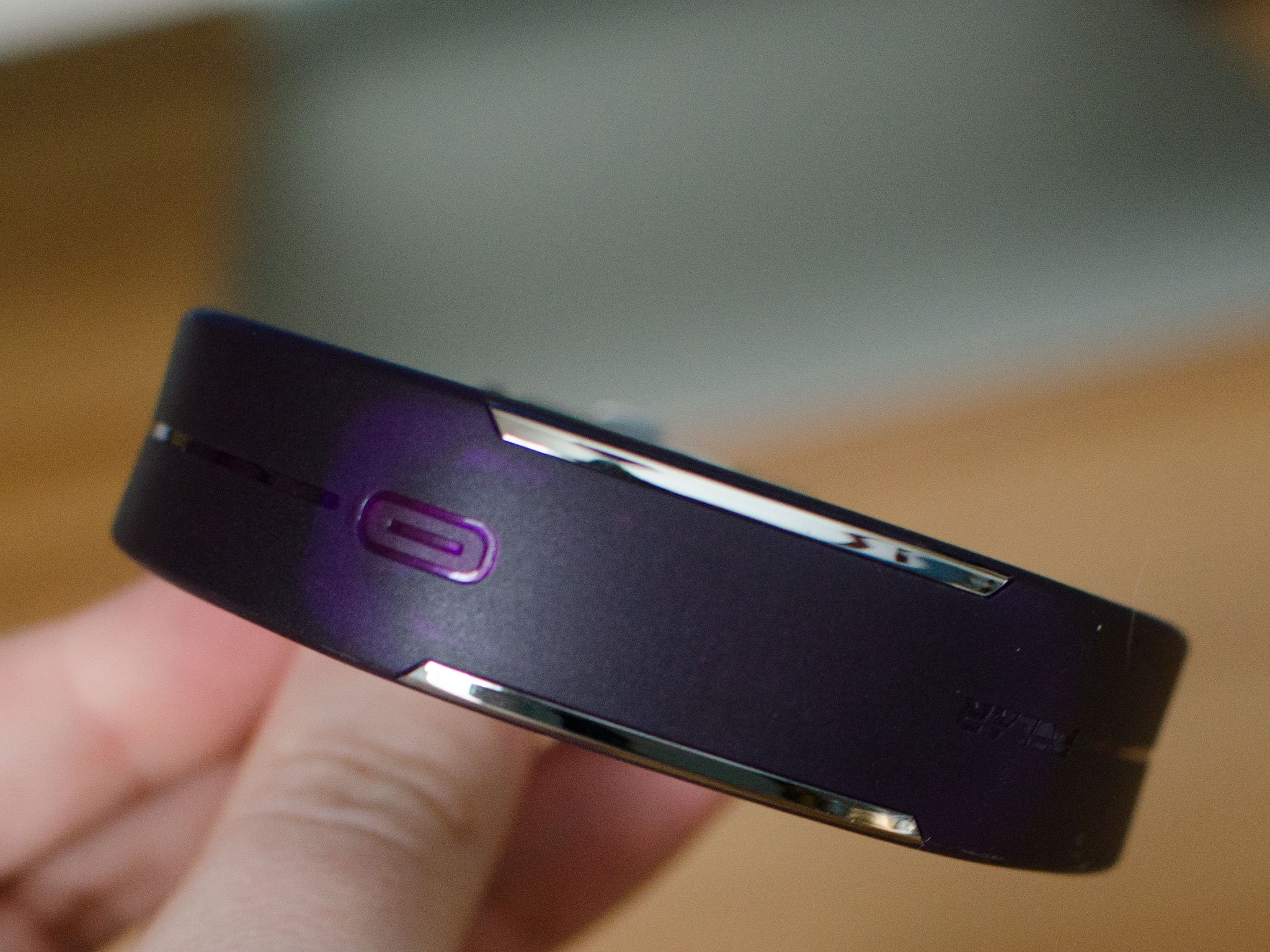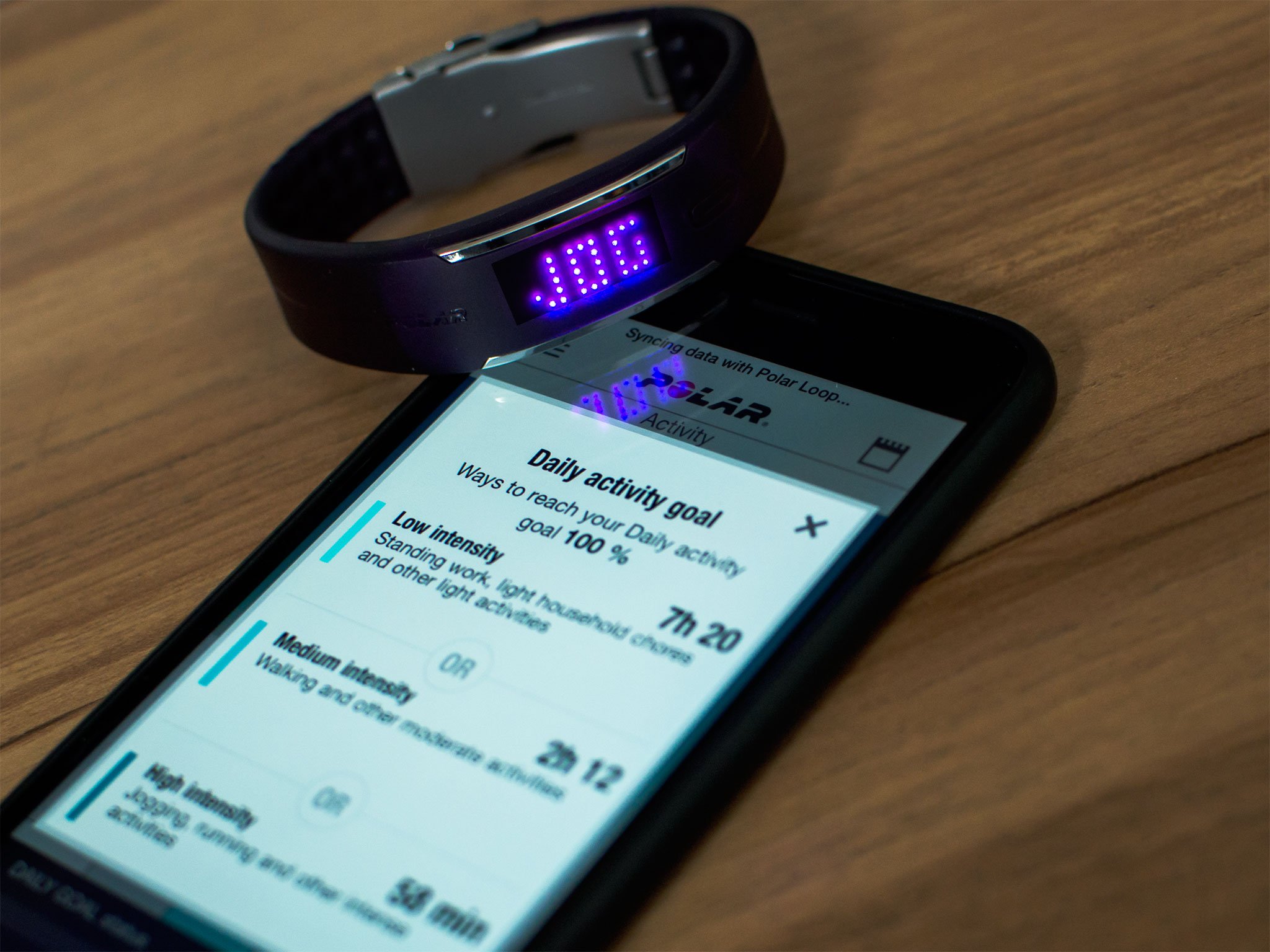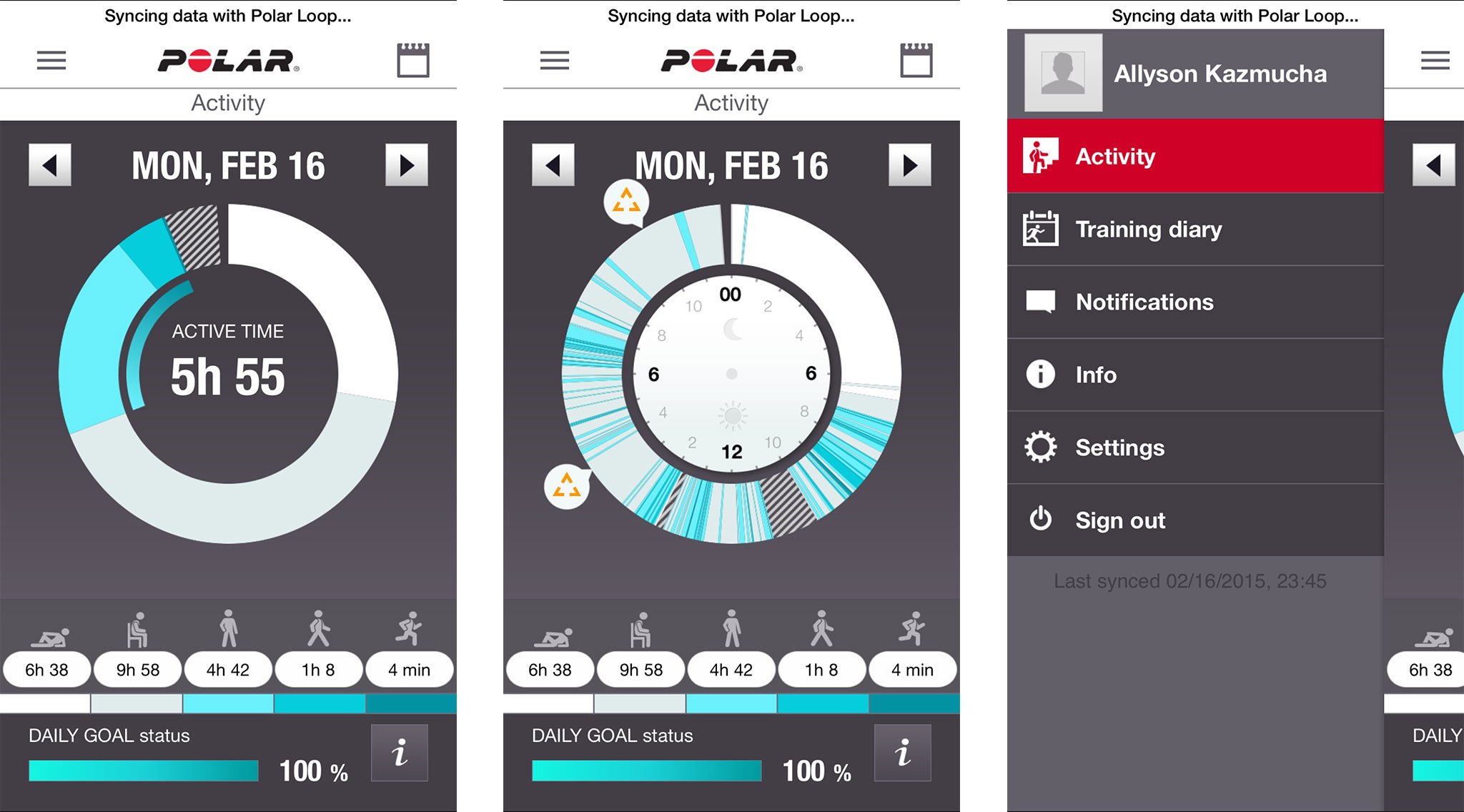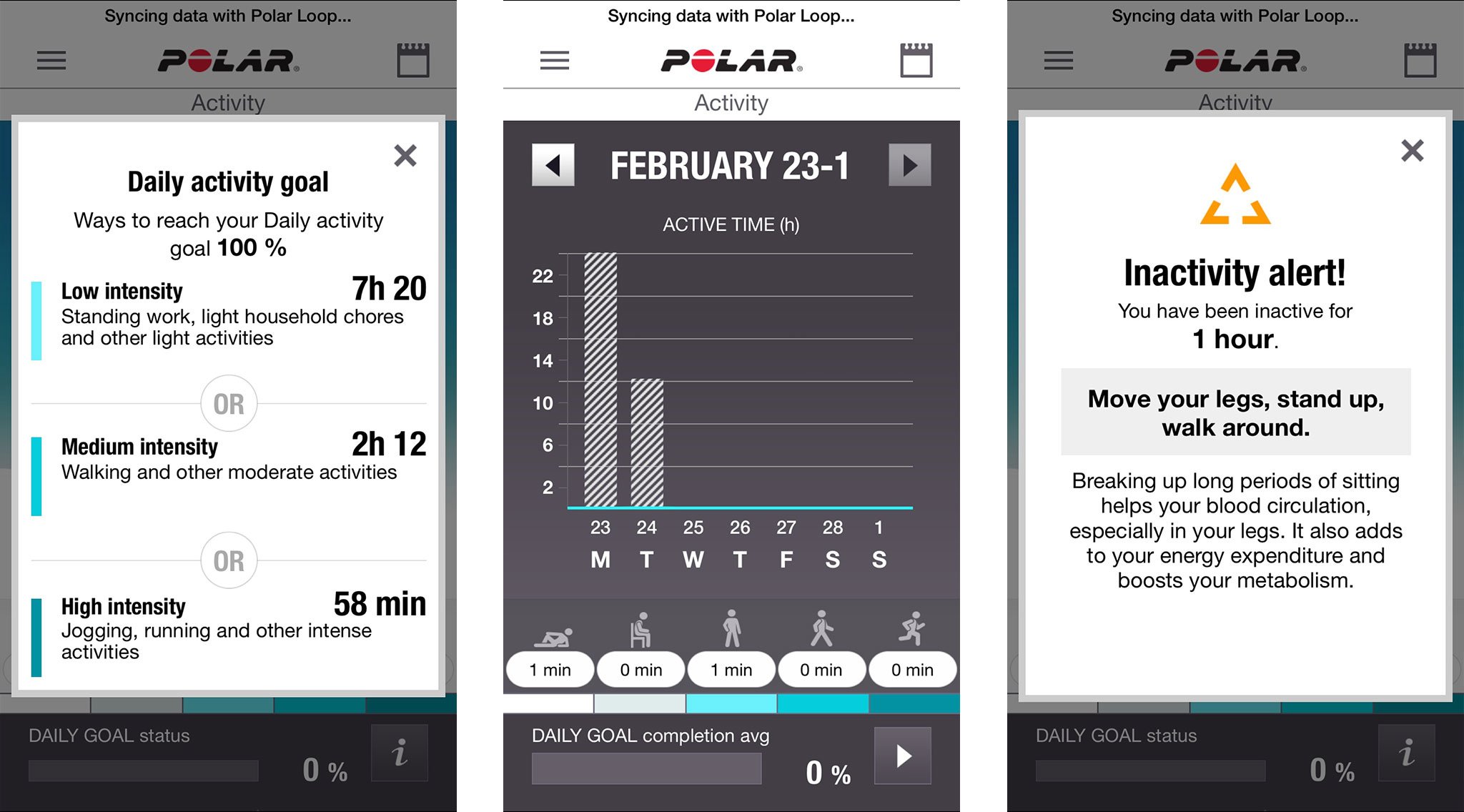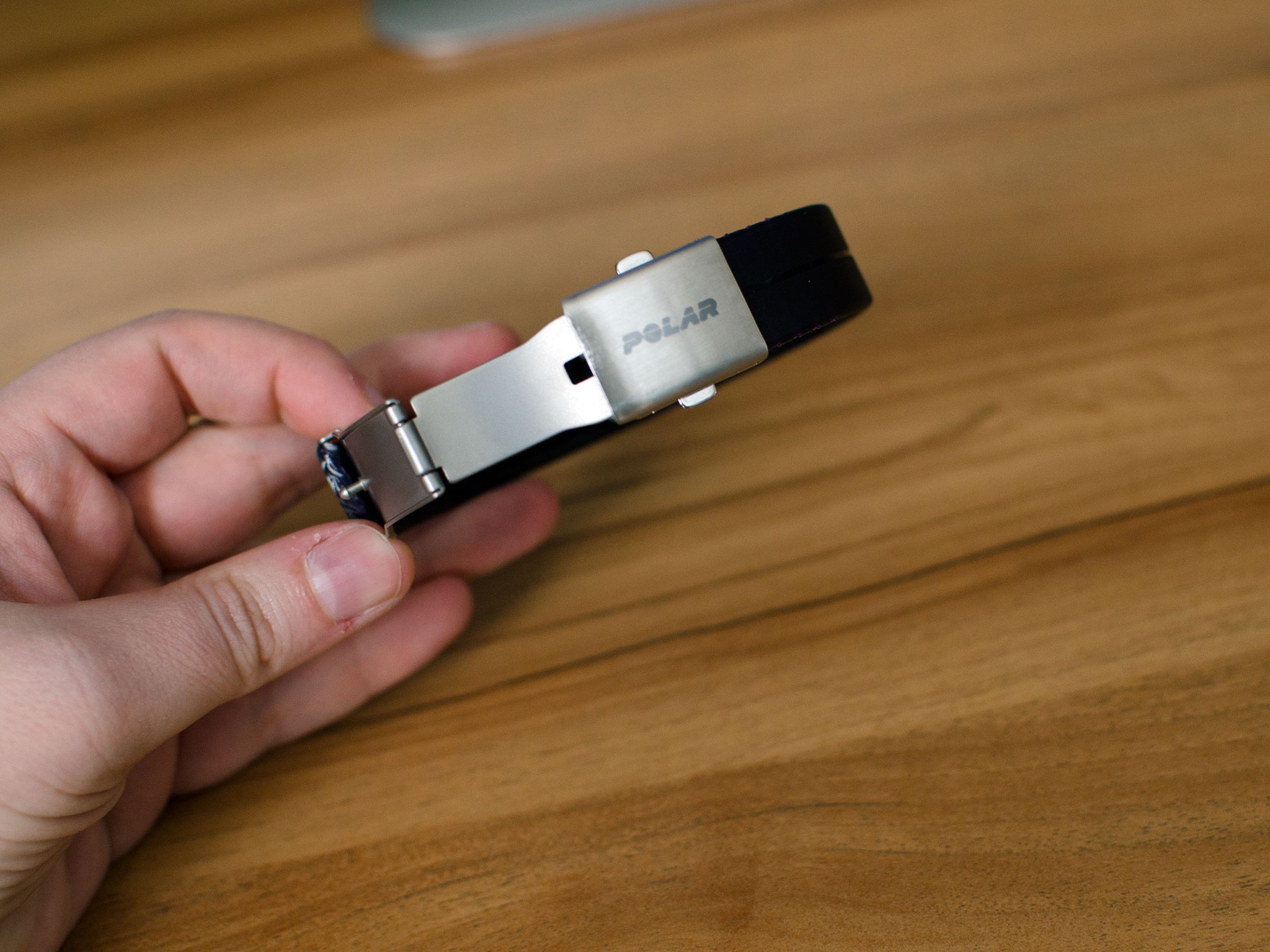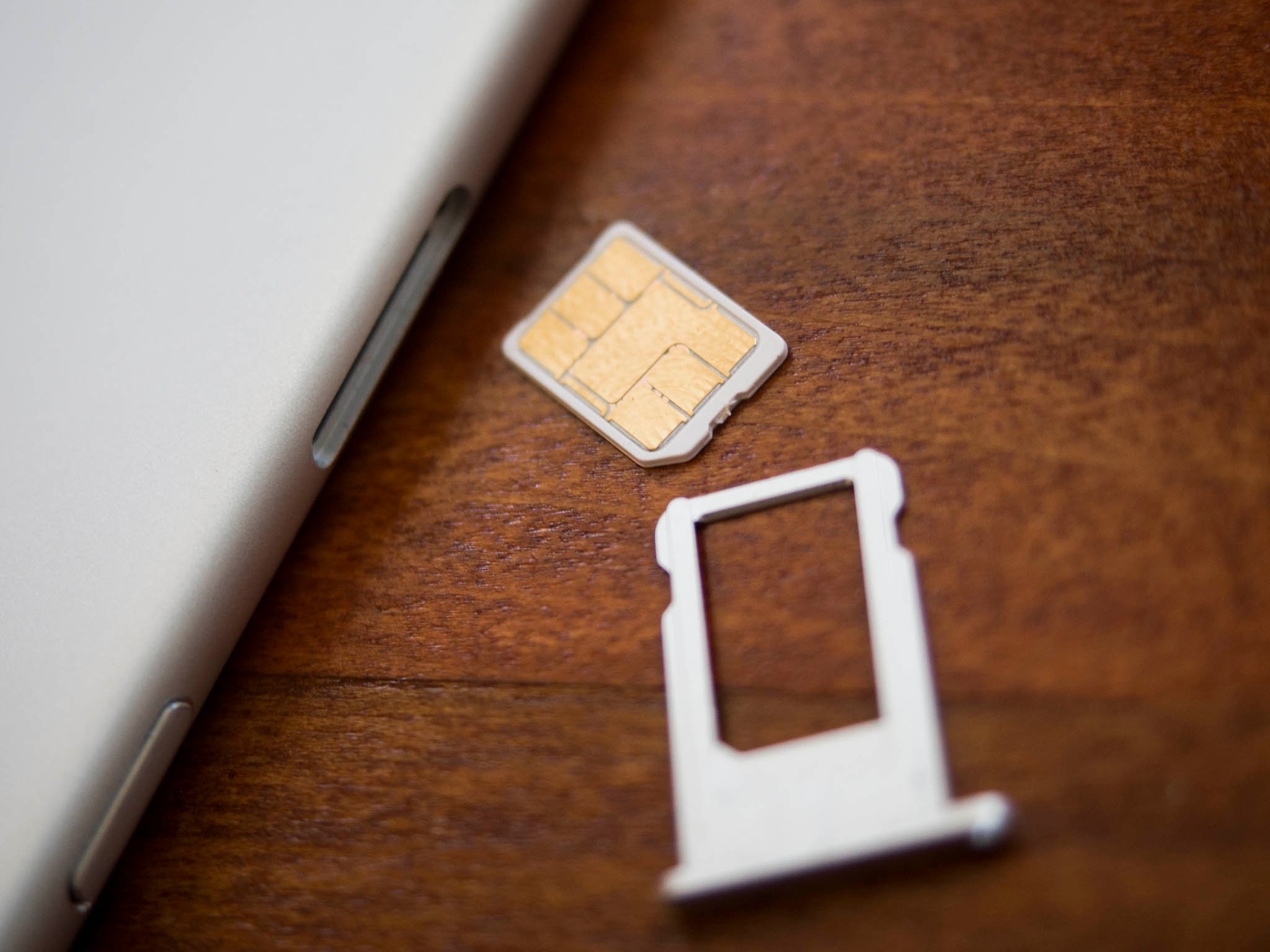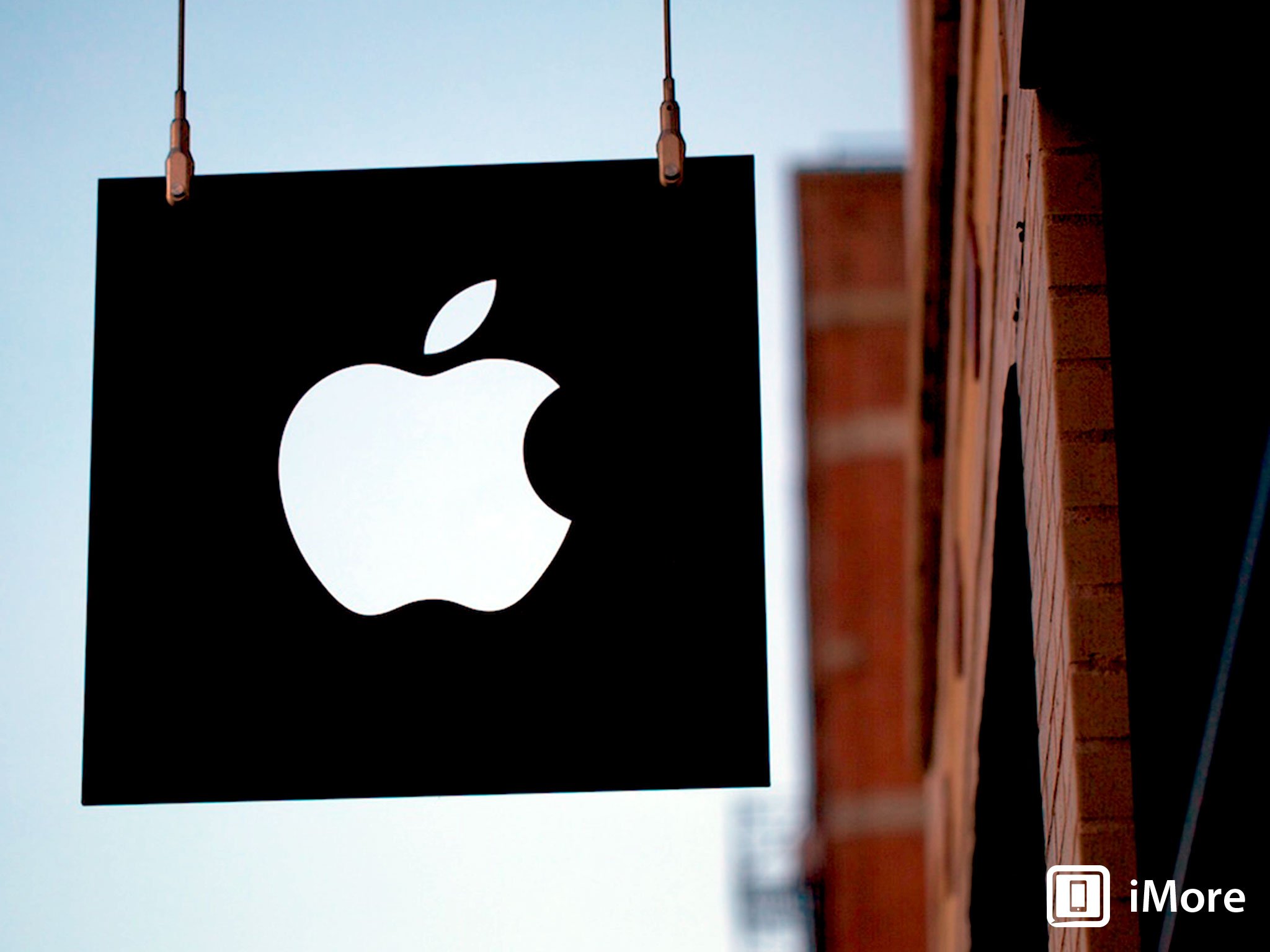We’re offering 50% off this iPhone 6 Plus anti-glare screen protector today only!
- feb
- 25
- Posted by Michael
- Posted in Okategoriserade
This iPhone 6 Plus screen protector is custom designed to fit perfectly on your device and is easy to apply, even for a novice. The ultra-slim PET film reduces glare and fingerprints while providing a smooth touchscreen experience. Each package includ…
read moreDevelopers launch campaign for remastered edition of Sonic the Hedgehog 3
- feb
- 25
- Posted by Michael
- Posted in Okategoriserade
The developers behind Sega’s remastered editions of Sonic the Hedgehog 1 and 2 are hoping that Sega will allow them to complete the trilogy by releasing their version of Sonic 3 & Knuckles for iPhone. Developers Christian Whitehead and Simon Thom…
read morePolar Loop fitness tracker review
- feb
- 25
- Posted by Michael
- Posted in Okategoriserade
The Polar Loop has a great hardware design, tracks motion and sleep, and can be worn while swimming and bathing. Unfortunately, the software side needs some serious work.
Worn like a traditional watch band with a clasp, the Polar Loop is comfortable and stylish all in one. But does function match form? How accurate is the step count? How well does goal-setting work? How good is the battery life? How effective is the waterproofing? Let’s find out!
The Polar Loop’s actual design is great. It comes with a tape to measure your wrist. Try it on and cut excess material off before fitting the clasps. The process was painless and took me less than 20 minutes. Just remember to cut little pieces at a time. You can always take more, but you can’t put material back.
Once fitted, the Polar Loop is easy to put on and take off. My only issue was that sometimes it’d get snagged on a tighter sweater sleeve and the clasp would come undone. It didn’t happen enough to make it a deal-breaker, but it’s something to be aware of. It was also fine with water. While I didn’t swim with it on — it’s winter here — I did shower with it. The display goes nuts, due to the touch sensitive button, but other than that, it resisted admirably, as advertised.
It takes about 90 minutes to fully charge the Polar Loop and it lasts about 6 days. That’s if you wear the band consistently, night and day.
All the data syncs to the Polar Flow app or the Flow desktop software on your computer. Setup, unfortunately, is cumbersome. When I open a fitness band, I shouldn’t have to have access to a computer to use it. Unfortunately, my Polar Loop didn’t want to do anything until I plugged it in and updated the firmware and created an account. Not a great experience out of the gate. Most other fitness bands I’ve used I could pair with my iPhone, update, and get going in minutes.
The Polar Loop only has one button and it’s touch sensitive. Tap it to switch through the different display modes. They show time, activity remaining, calories, and steps.
Polar doesn’t let you set a step count goal, but instead focuses on an overall activity goal. You can reach that by performing about an hour of intense movement such as running.
Daily activities are tracked at five intensity levels: resting, sitting, low, medium and high. For regular day to day activity, I managed to reach 100% of my goal by getting in around 11,000 steps or burning 2,200 calories. The days I hit 100% I only spent about 30-45 minutes at the gym and took a few short walks with the dogs throughout the rest of the day. While this system may work for some, particularly active individuals may find the inability to set higher goals a deal breaker.
Last year when I did a fitness band roundup, I found the Jawbone UP24 to be the most accurate when it came to measuring calories burned and step count. I used this as a base line while reviewing all trackers this year. The Polar Loop was always within 200 steps and about 50 calories of my UP24. To me, that makes it one of the more accurate trackers I’ve tested to date, and that’s an important consideration.
The Polar Flow app is a different story: It holds the hardware back.
It looks outdated, especially for a band that’s otherwise high end. It hasn’t been updated for the iPhone 6 and iPhone 6 Plus screen sizes yet, and while the breakdown of data is easy to read, there’s not much you can do with it.
The main portion of the app is a circular graph that measures your activity. Tap on any section to see other details. You can tap the info button on the bottom of each day to see how you can reach your goal based on where you’re currently at. You can break down data on a weekly or monthly basis. You can also receive inactivity alerts when you stand idle too long.
You can’t add in workout data like you can with other fitness trackers, however, and you can’t adjust sleep or set custom goals. And if you want to use the journal and diary entry feature, you have to use the Flow app on the desktop.
Unfortunately, a lot of people on the App Store are complaining of data loss in the Polar Flow app. This is something I experienced as well. For some reason, after a few weeks, data seems to just drop off out of existence. That’s not good.
The Polar Loop also supports external heart rate sensors. Polar sells their own variant, or you can opt for another external sensor of your choice. Polar can’t guarantee compatibility, and it’s another component to manage. So, it’d be nice to see Polar come out with an updated model that integrated a heart rate sensor on the back side. Otherwise you can’t use training sessions with the current Loop unless you buy a sensor.
The good
- Great watch-style design that is easy to put on and remove
- Water resistant up to 20m, which means you can swim and shower without removing it
- Supports external heart rate sensors, although an internal sensor would be even better
- Step count and calories burned are much more accurate than they are with other trackers
The bad
- Can’t use training session feature without buying a heart rate sensor
- Polar Flow app suffers from severe data loss issues
- App itself is clunky and needs serious updates
- Poor initial signup and setup process since you actually need a computer
- Clasp on Loop can come undone easily if it gets caught on a shirt or sweater
The bottom line
The setup and software issues are major, and hopefully will be addressed soon. Otherwise, the Polar Loop hardware is excellent. if you’re looking for a modest fitness tracker that’s comfortable to wear, looks good, and doesn’t break the bank, the Polar Loop is still an excellent choice.
- Polar Loop – $75 – Buy Now
![]()
Så många smarta klockor såldes 2014
- feb
- 25
- Posted by Michael
- Posted in Apple Watch, MacWorld, Teknik, Ut på Twitter


Trots all uppmärksamhet i media har smarta klockor fortfarande inte fått sitt stora genombrott.
Barclays Pingit will allow you to send money using your Twitter handle
- feb
- 25
- Posted by Michael
- Posted in Okategoriserade
Barclays has announced that Pingit users in the UK will be able to use their smartphones to send money using Twitter handles, which would remove the requirement for mobile numbers and bank account details to be exchanged. The new feature will go live …
read moreHow BabyTalk made remote therapy accessible with iPad and FaceTime
- feb
- 25
- Posted by Michael
- Posted in Okategoriserade
BabyTalk is a free program offered by the Stanford Ear Institute and Weingarten Children’s Center that uses Apple’s iPad and FaceTime to bring speech therapy to deaf and hard-of-hearing children in the rural areas of California.
Kathy Sussman is executive director at Weingarten, and a passionate advocate for the children, aged newborn to three years, served by BabyTalk. I spoke with Kathy over the phone for our Experts series and found out just how much work and dedication it took, from everyone involved, to make the program a reality, and the challenges it faces moving forward.
Weingarten’s Children’s Center is nestled in Redwood City, California, and provides an invaluable service for kids who are able to attend. Kathy and the BabyTalk program, however, were determined to extend those resources far beyond the walls of the school — to dozens of children in 28 rural counties whose parents couldn’t afford the time and loss of income it would take to travel for speech therapy.
That therapy is critically important for very young children, especially for those with cochlear implants — devices that bypass the inner ear and deliver sound directly to the auditory nerves. Those children need to learn how to process and make sense of the sound information, and that requires an expert coaching and a lot hard work.
When the children’s families live far from in-person therapy, when they have limited resources, limited eduction, and limited language skills themselves, telemedicine — the ability to do the therapy remotely — is the only practical solution.
”Traditional telemedicine was expensive, cumbersome, and restrictive.”
Studio cameras, crews, and the resources needed to run them were cost-prohibitive for the school, never mind the families, Kathy had to look into alternatives. The solution she found was the iPad. Not only was it relatively inexpensive, it could be moved as the children and parents move.
Kids, especially at that young an age, don’t stay still for long. Moreover, in dwellings with extended families, finding someplace quiet enough for a therapy session can often involve going outside or to a park. The iPad can go almost anywhere the family needs it to.
”FaceTime has end-to-end encryption. It was the only system Stanford would accept.”
Because of HIPPA, the The Health Insurance Portability and Accountability Act, any conversations with a therapist also have to be protected, and that means end-to-end encryption.
After exploring options including Skype, whose lack of end-to-end encryption made it unusable for Stanford, Kathy settled on FaceTime. Not only was FaceTime secure enough to satisfy Stanford, it was built right into the iPad.
Fueled by a $260,000 grant, the BabyTalk program was able to hire therapists, setup computer systems and high-bandwidth internet connections on their end, and supply iPads, cases, stands, and mobile broadband connections for 30 children in need.
”The iPad was seamless. It was incredibly easy for parents to use.”
The iPad itself proved simple for the parents. When it came time for their weekly appointments, all they had to do was answer the FaceTime call.
Connectivity issues did occur at times, and while BabyTalk lacked dedicated IT support resources, they managed to troubleshoot them anyway. Since the stands for the iPads also included chargers, and since Parental Restrictions prevented them from being used for games or other non-therapeutic apps, they were almost always charged, and had more than enough data for the sessions.
Because the iPad was so portable, parents and children seldom missed sessions. There were no travel conflicts or delays to worry about, and in one case when a child had to be taken in for medical treatment, a family member was easily able to bring the iPad along.
”Sessions last for one hour and are focused on the parent.”
Moreover, even if the child was sick or otherwise unable to participate, since the parent had the iPad and FaceTime, the speech therapist could make sure the parent got all the information they needed to help their child continue with his or her development.
That could include anything from making the parents feel more comfortable with the cochlear implant equipment itself, to troubleshooting, to helping their children become accustomed to everyday sounds like doorbells, to working on language skills.
Because FaceTime is such a visual means of communication, it also helped everyone feel better connected, and made it so parents weren’t afraid to ask questions. That helped create a bond and made the experience engaging, with further reduced cancelations and missed appointments.
”It’s a gift.”
The great news is that BabyTalk is working. The challenge is that, with the initial three year grant running out, they’ll need additional funding to maintain and expand the program. If you want to support the work Kathy and the team at BabyTalk are doing, you can donate now.
![]()
How to transfer photos from your Mac or PC to your iPhone and iPad
- feb
- 25
- Posted by Michael
- Posted in Okategoriserade
Confused about how to sync your Mac or Windows PC photos to your iPhone or iPad? We’ve got you covered. Photos app for OS X and iCloud Photo Library are great options for those who want to rely on Apple to store their images. But you’re not limited to iCloud: You can instead use iTunes or another third-party cloud service to sync images between your computer and your iPhone or iPad. So if you want to showcase your computer’s images on your iOS devices, never fear: iMore has you covered. Here’s a quick tutorial on all the ways you can currently sync your Mac or Windows PC images to your iPhone or iPad. How to move and view your photos if you have iCloud Photo Library enabled While I still have some issues with Apple’s iCloud Photo Library, it remains one of the best ways to keep your photos in sync between your Mac, PC, and any other iOS devices you may own. There are a few different ways to transfer photos from your Mac, which I’ll outline below. Option one: Use Photos for Mac …
read moreSå blir du av med Mackeeper, popuprutor och skräpprogram på Macen
- feb
- 25
- Posted by Michael
- Posted in Datorer, Guide, Internet/Webbtjänster, Mac, Mac OS X (generellt), Macintosh, MacWorld, Mjukvara, Säkerhet, Teknik, Virus


Så här gör du för att kontrollera och göra dig av med de vanligaste skadeprogrammen som drabbar Macen.
Gemalto denies ’massive theft’ of SIM card encryption keys by NSA and GCHQ
- feb
- 25
- Posted by Michael
- Posted in Okategoriserade
Digital security vendor Gemalto revealed its findings today following last week’s report of an incursion by the NSA and the GCHQ into the vendor’s SIM card encryption keys. While Gemalto noted that an operation by NSA and GCHQ ”probably happened” in 2010 and 2011, the intrusion could not have resulted in a ”massive theft” of SIM card encryption keys as the breach affected the company’s office network and not its secure networks.
Gemalto mentioned that the SIM card encryption keys were not stored in the networks that were breached:
These intrusions only affected the outer parts of our networks – our office networks – which are in contact with the outside world. The SIM encryption keys and other customer data in general, are not stored on these networks. It is important to understand that our network architecture is designed like a cross between an onion and an orange; it has multiple layers and segments which help to cluster and isolate data.
Access to the keys would have allowed the US and UK government agencies the ability to listen in on phone conversations and install malware on any Gemalto-issued SIM card. With an annual production of 2 billion SIM cards and association with most major carriers in the world including US carriers such as AT&T, Sprint, and Verizon, any security breach at the vendor would have global consequences. Here’s what Gemalto found in its investigation into the hack:
The investigation into the intrusion methods described in the document and the sophisticated attacks that Gemalto detected in 2010 and 2011 give us reasonable grounds to believe that an operation by NSA and GCHQ probably happened
The attacks against Gemalto only breached its office networks and could not have resulted in a massive theft of SIM encryption keys
The operation aimed to intercept the encryption keys as they were exchanged between mobile operators and their suppliers globally. By 2010, Gemalto had already widely deployed a secure transfer system with its customers and only rare exceptions to this scheme could have led to theft
In the case of an eventual key theft, the intelligence services would only be able to spy on communications on second generation 2G mobile networks. 3G and 4G networks are not vulnerable to this type of attack
None of our other products were impacted by this attack
The best counter-measures to these type of attacks are the systematic encryption of data when stored and in transit, the use of the latest SIM cards and customized algorithms for each operator
According to Gemalto, even if the SIM card encryption keys were stolen, it would have resulted in the US and UK intelligence networks spying on 2G networks, making most users in developed countries prone to intrusion by covert agencies. However, The Intercept – the publication that first broke the news of the hack – noted that the target countries for the NSA and GCHQ’s spying activities included Afghanistan, Iceland, India, Iran, Pakistan, Serbia, Somalia, Serbia,Tajikistan and Yemen, where 2G networks are still the norm. Gemalto stated that its secure data transfer system was in use at that time, which would have deterred hackers from gaining access to the encryption keys.
Head to the link below to read all of Gemalto’s findings.
Source: Gemalto
![]()
Apple ordered to pay $533 million for infringing on gaming-related patents
- feb
- 25
- Posted by Michael
- Posted in Okategoriserade
A federal jury in Texas has ordered Apple to pay $533 million in damages after it found that the company’s digital media distribution services – including the iTunes Store – infringed on three patents owned by Smartflash LLC. The patents in question were allegedly used without permission in third-party games that were available from iTunes.
According to Bloomberg:
The dispute is over digital rights management and inventions related to data storage and managing access through payment systems. Smartflash claimed that iTunes used the inventions in applications such as Game Circus LLC’s Coin Dozer and 4 Pics 1 Movie.
The game companies settled out of court with Smartflash, with Apple deciding to go to court on grounds that the patents in question ”were invalid.” Kristin Huguet, an Apple spokeswoman, said:
Smartflash makes no products, has no employees, creates no jobs, has no U.S. presence, and is exploiting our patent system to seek royalties for technology Apple invented. We refused to pay off this company for the ideas our employees spent years innovating and unfortunately we have been left with no choice but to take this fight up through the court system.
Smartflash does not sell products itself, with its only source of income coming from the seven patents it holds, all of which are attributed to its co-founder Patrick Racz. The company sought $852 million in damages from Apple, a number arrived at calculating a portion of iPhone, iPad and Mac device sales. Apple said that the patents were worth $4.5 million at most, with general counsel Eric Albritton arguing that there was no valid reason for the hardware giant to pay royalties on device sales when the patent dispute is over a single feature. According to the lawyer:
It doesn’t make a lick of sense that one person would buy an iPhone and not make calls. People do not buy cell phones for the sole purpose of using apps.
Apple failed in its attempts to persuade the jury that the patents in question were not directly used by iTunes. The Cupertino giant also failed in its bid to get Smartflash’s patents invalidated.
With the Apple case coming to a close, Smartflash is going after Samsung next. The company also sued Google and Amazon over the usage of the same patents in their respective digital distribution services. You can view Smartflash’s court filing against Apple in its entirety here.
Source: Bloomberg
![]()
Senaste inläggen
- Macbook Air M4-benchmark har läckt – imponerar med nästan Macbook Pro-prestanda
- Apple förbereder integration av Google Gemini i Apple Intelligence
- Windscribe VPN – snabb och effektiv vpn för Mac
- Kalifornien nominerar Steve Jobs till den amerikanska innovationsdollarn
- Kalifornien nominerar Steve Jobs till den amerikanska innovationsdollarn
Senaste kommentarer
Arkiv
- februari 2025
- januari 2025
- september 2024
- augusti 2024
- juli 2024
- juni 2024
- maj 2024
- april 2024
- mars 2024
- februari 2024
- januari 2024
- december 2023
- november 2023
- oktober 2023
- september 2023
- augusti 2023
- juli 2023
- juni 2023
- maj 2023
- april 2023
- mars 2023
- februari 2023
- januari 2023
- december 2022
- november 2022
- oktober 2022
- september 2022
- augusti 2022
- juli 2022
- juni 2022
- maj 2022
- april 2022
- mars 2022
- februari 2022
- april 2021
- mars 2021
- januari 2021
- december 2020
- november 2020
- oktober 2020
- september 2020
- augusti 2020
- juli 2020
- juni 2020
- maj 2020
- april 2020
- mars 2020
- februari 2020
- januari 2020
- december 2019
- november 2019
- oktober 2019
- september 2019
- augusti 2019
- juli 2019
- juni 2019
- maj 2019
- april 2019
- mars 2019
- februari 2019
- januari 2019
- december 2018
- november 2018
- oktober 2018
- september 2018
- augusti 2018
- juli 2018
- juni 2018
- maj 2018
- april 2018
- mars 2018
- februari 2018
- januari 2018
- december 2017
- november 2017
- oktober 2017
- september 2017
- augusti 2017
- juli 2017
- juni 2017
- maj 2017
- april 2017
- mars 2017
- februari 2017
- januari 2017
- december 2016
- november 2016
- oktober 2016
- september 2016
- augusti 2016
- juli 2016
- juni 2016
- maj 2016
- april 2016
- mars 2016
- februari 2016
- januari 2016
- december 2015
- november 2015
- oktober 2015
- september 2015
- augusti 2015
- juli 2015
- juni 2015
- maj 2015
- april 2015
- mars 2015
- februari 2015
- januari 2015
- december 2014
- november 2014
- oktober 2014
- september 2014
- augusti 2014
- juli 2014
- juni 2014
- maj 2014
- april 2014
- mars 2014
- februari 2014
- januari 2014
Kategorier
- –> Publicera på PFA löp
- (PRODUCT) RED
- 2015
- 25PP
- 2nd gen
- 32gb
- 3D Touch
- 3D-kamera
- 4k
- 64gb
- 9to5mac
- A10
- A9X
- Aaron Sorkin
- Accessories
- adapter
- AirPlay
- AirPods
- Aktiv
- Aktivitetsarmband
- Aktuellt
- Alfred
- Allmänt
- AMOLED
- Android Wear
- Angela Ahrendts
- Ångerätt
- Animal Crossing
- Animal Crossing New Horizons
- announcements
- Ansiktsigenkänning
- app
- App Store
- Appar
- Apple
- Apple Beta Software Program
- Apple Book
- Apple CarPlay
- Apple Event
- Apple iMac
- Apple Inc
- Apple Inc, Consumer Electronics, iCloud, iOS, iPhone, Mac, Mobile, Personal Software, Security Software and Services
- Apple Inc, iCloud
- Apple Inc, iOS
- Apple Inc, Mobile Apps
- Apple Inc, Monitors
- Apple Mac Mini
- Apple Macbook
- Apple MacBook Air
- Apple MacBook Pro
- Apple Macos
- Apple Maps
- Apple Music
- Apple Music Festival
- Apple Music Radio
- Apple Offer
- Apple Online Store
- Apple Park
- Apple Pay
- Apple Pencil
- Apple Podcast
- Apple Store
- Apple Store 3.3
- Apple TV
- apple tv 4
- Apple TV 4K
- Apple Watch
- Apple Watch 2
- Apple Watch 8
- Apple Watch 9
- Apple Watch Apps
- Apple Watch SE
- Apple Watch Series 2
- Apple Watch Sport
- Apple Watch Ultra
- Apple Watch, Headphones
- Apple Watch, iPhone
- AppleCare
- AppleTV
- Application
- Applications
- Apps
- AppStore
- Apptillägg
- Apptips
- AppTV
- April
- Arbetsminne
- armband
- Art Apps
- Återköp
- återvinning
- Åtgärdsalternativ
- atvflash
- Audio Apps
- Augmented REality
- Back-to-school
- Bakgrundsbilder
- BankId
- Barn
- Batteri
- batteriskal
- batteritid
- Beats
- Beats 1
- Beats Solo 2 Wireless
- Beats Solo2
- Bebis
- Beginner Tips
- Belkin
- Bendgate
- beta
- Beta 3
- betaversion
- betaversioner
- bilddagboken.se
- bilder
- bilhållare
- billboard
- Bioteknik
- Blendtec
- Bloomberg
- Bloons TD 5
- Bluelounge
- Bluetooth
- Böj
- Booking.com
- Borderlinx
- bose
- bugg
- Buggar
- Buggfixar
- Butik
- C More
- Calc 2M
- Camera
- Camera Apps
- Campus 2
- Canal Digital
- Carpool Karaoke
- Caseual
- Catalyst
- CES 2015
- Chassit
- Chip
- Chrome Remote Desktop
- Chromecast
- citrix
- clic 360
- CNBC
- Computer Accessories
- Computer Accessories, Laptop Accessories
- Connect
- Cydia
- Dagens app
- Dagens tips
- Damm
- Danny Boyle
- Data
- datamängd
- Datorer
- Datortillbehör
- Datum
- Defense
- Dekaler
- Designed by Apple in California
- Developer
- Development
- Digital Inn
- Digital Touch
- Digitalbox
- DigiTimes
- Direkt
- Discover
- display
- DisplayMate
- Dive
- Docka
- Dräger 3000
- Dropbox
- Droples
- DxOMark
- E-post
- earpod
- EarPods
- Earth Day
- Eddie Cue
- eddy cue
- Educational Apps
- Ekonomi
- Ekonomi/Bransch
- El Capitan
- Elements
- ElevationLab
- Elgato Eve
- Elgato Eve Energy
- EM 2016
- Emoji
- emojis
- emoticons
- Enligt
- Entertainment Apps
- EU
- event
- Eventrykten
- EverythingApplePro
- Faceshift
- facetime
- Fäste
- Featured
- Features
- Feng
- Film / Tv-serier
- Filmer
- Filstorlek
- Finance Apps
- Finder For AirPods
- Finland
- FireCore
- Fitbit
- Fitness Accessories
- Fjärrstyr
- Flurry
- Födelsedag
- fodral
- Förboka
- Force Touch
- förhandsboka
- Första intryck
- Forumtipset
- foto
- FoU (Forskning och Utveckling)
- Fource Touch
- Foxconn
- FPS Games
- Framtid
- Fre Power
- Frontpage
- Fullt
- Funktioner
- Fuse Chicken
- Fyra
- Gadgets
- Gagatsvart
- Gamereactor
- Games
- Gaming
- Gaming Chairs
- Gästkrönika
- General
- Gigaset
- Gitarr
- Glas
- GM
- Google Maps
- Google Now
- gratis
- grattis
- Guide
- Guider
- Guider & listor
- Guld
- hack
- Halebop
- hållare
- Hälsa
- Hårdvara
- HBO
- HBO Nordic
- Health
- Health and Fitness
- Health and Fitness Apps
- Hej Siri
- Helvetica Neue
- Hemelektronik
- Hemknapp
- Hemlarm
- Hermes
- Hitta min iphone
- Hjärta
- högtalare
- HomeKit
- HomePod
- Homepod Mini
- hörlurar
- htc
- Hue
- Humor
- i
- I Am A Witness
- IBM
- iBolt
- iBomber
- iBook
- icar
- iCloud
- iCloud Drive
- iCloud Voicemail
- iCloud.com
- iDevices
- IDG Play
- idownloadblog
- iFixit
- ikea
- iKörkort
- iLife
- Illusion Labs
- iMac
- IMAP
- iMessage
- iMessages
- iMore Show
- Incipio
- InFuse
- Inspelning
- Instagram-flöde
- Instrument
- Intel
- Internet/Webbtjänster
- iOS
- iOS 10
- iOS 12
- iOS 17
- iOS 18
- iOS 5
- iOS 7
- iOS 8
- iOS 8 beta
- iOS 8.1.3
- iOS 8.2
- iOS 8.3
- iOS 8.4
- iOS 8.4.1
- iOS 9
- iOS 9 beta 4
- iOS 9.1
- iOS 9.1 beta 2
- iOS 9.2
- iOS 9.2.1
- iOS 9.3
- IOS Games
- ios uppdatering
- iOS, iPad, MacOS
- iOS, iPhone
- ios9
- iPad
- iPad Accessories
- iPad Air
- iPad Air 2
- iPad Air 3
- iPad Air 5
- iPad Apps
- iPad Mini
- iPad mini 4
- iPad Mini 6
- iPad mini retina
- iPad Pro
- iPad, iPhone, Mac
- iPad, iPhone, Mobile Apps
- iPad, iPhone, Streaming Media
- iPados
- iphone
- iPhone 12
- iPhone 14
- iPhone 14 Pro
- iPhone 15
- iPhone 16
- iPhone 17
- iPhone 5
- iPhone 5S
- iPhone 5se
- iPhone 6
- iphone 6 plus
- iPhone 6c
- iPhone 6s
- iPhone 6S plus
- iPhone 7
- iPhone 7 display
- iPhone 7 Plus
- iPhone 7s
- iPhone Accessories
- iPhone Apps
- iPhone Cases
- iPhone SE
- iphone x
- iPhone XS
- iPhone XS Max
- iPhone, Mobile Apps
- iPhone7
- iPhoneGuiden
- iPhoneguiden.se
- iPhones
- iPod
- iPod Nano
- iPod shuffle
- ipod touch
- iSight
- iTunes
- iWatch
- iWork
- iWork för iCloud beta
- Jailbreak
- James Corden
- Jämförande test
- Jämförelse
- Jet Black
- Jet White
- Jönssonligan
- Jony Ive
- Juice Pack
- Juridik
- Just mobile
- kalender
- kalkylator
- Kamera
- Kameratest
- Karriär/Utbildning
- Kartor
- Kevin Hart
- keynote
- Keynote 2016
- KGI
- KGI Security
- Kina
- Klassiskt läderspänne
- Kod
- Kollage
- koncept
- konceptbilder
- köpguide
- krasch
- Krascha iPhone
- Krönika
- Kvartalsrapport
- Laddhållare
- laddningsdocka
- Laddunderlägg
- läderloop
- lagar
- Lagring
- Lajka
- Länder
- lansering
- laserfokus
- Layout
- leather loop
- LG
- Liam
- Lifeproof
- Lightnigport
- lightning
- Linux
- LinX
- live
- Live GIF
- Live Photos
- Live-event
- Livsstil
- Ljud & Bild
- Logitech
- LOL
- Lösenkod
- Lösenkodlås
- Lovande spel
- LTE
- Luxe Edition
- M3
- M3TV
- Mac
- Mac App Store
- Mac Apps
- Mac Mini
- Mac OS
- Mac OS X
- Mac OS X (generellt)
- Mac OS X Snow Leopard
- Mac Pro
- Mac, MacOS
- Mac, Online Services
- Mac, Security Software and Services
- Macbook
- Macbook Air
- Macbook Pro
- MacBook, MacOS
- Macforum
- Macintosh
- macOS
- MacOS, Security Software and Services
- Macs
- MacWorld
- Made for Apple Watch
- magi
- Magic
- MagSafe
- Martin Hajek
- matematik
- Meddelanden
- Media Markt
- Medieproduktion
- Mediocre
- Messaging Apps
- Messenger
- MetaWatch
- Mfi
- Michael Fassbender
- microsoft
- Mikrofon
- Minecraft
- Ming-Chi Kuo
- miniräknare
- minne
- Mixer
- Mixning
- Mjukvara
- mobbning
- Mobile Apps
- Mobile Content
- Mobilt
- Mobilt/Handdator/Laptop
- Mobiltelefon
- Mockup
- Mophie
- mors dag
- moto 360
- Motor
- MTV VMA
- multitasking
- Music
- Music Apps
- Music, Movies and TV
- Musik
- Musikmemon
- MW Expo 2008
- native union
- Nätverk
- Navigation Apps
- nedgradera
- Netatmo Welcome
- Netflix
- Netgear Arlo
- News
- Niantic
- Nike
- Nikkei
- Nintendo
- Nintendo Switch
- Nöje
- Norge
- Notis
- Notiscenter
- nya färger
- Nyfödd
- Nyheter
- Officeprogram
- Okategoriserade
- OLED
- omdöme
- Omsättning
- OS X
- OS X El Capitan
- OS X Mavericks
- OS X Yosemite
- Outlook
- Övrig mjukvara
- Övrigt
- PanGu
- papper
- patent
- PC
- pebble
- Pebble Smartwatch
- Pebble Steel
- Pebble Time
- Pebble Time Steel
- Persondatorer
- Petter Hegevall
- PewDiePie
- Philips
- Philips Hue
- Phones
- Photoshop
- Planet of the apps
- Plex
- Pluggar
- Plus
- Plusbox
- Podcast
- Podcast Apps
- Pokemon
- Pokemon Go
- Policy
- Porträttläge
- PP
- Pris
- priser
- problem
- Problems
- Productivity Apps
- Program
- Prylar & tillbehör
- Publik
- publik beta
- QuickTime
- räkenskapsår
- räkna
- ram
- RAM-minne
- Rapport/Undersökning/Trend
- Rea
- Reading Apps
- recension
- Red
- reklaamfilm
- reklam
- reklamfilm
- reklamfilmer
- rekord
- Rendering
- reparation
- Reportage
- Reptest
- ResearchKit
- Retro
- Review
- Ring
- Ringa
- Rocket Cars
- Rosa
- Rumors
- Rumours
- RunKeeper
- rykte
- Rykten
- Safir
- Säkerhet
- Säkerhetsbrist
- Samhälle/Politik
- samsung
- Samtal
- San Francisco
- SAP
- security
- Series 2
- Servrar
- Shigeru Miyamoto
- Sia
- Simulation Games
- Siri
- SJ Min resa
- skal
- Skal iPhone 6
- skal iPhone 6s
- skärm
- SKärmdump
- Skärmglas
- Skribent
- skribenter medarbetare
- Skriva ut
- skruvmejsel
- skydd
- Skyddsfilm
- Skype
- slice intelligence
- Smart
- smart hem
- Smart Home
- Smart Keyboard
- Smart klocka
- Smart Lights
- smartphone
- Smartwatch
- SMS
- Snabbt
- Snapchat
- Social Apps
- Software
- Solo2
- sommar
- Sonos
- Sony
- soundtouch
- Space Marshals
- spår
- Speakers
- Special Event
- Spel
- Spelkonsol
- Spellistor
- Split Screen
- Split View
- Sport
- Sportband
- Sports Apps
- spotify
- Spring forward
- Statistik
- Steve Jobs
- Stickers
- Stockholm
- Stor iPhone
- Storlek
- Story Mode
- Strategy Games
- streama
- Streaming
- Streaming Devices
- Streaming Media
- stresstest
- Ström
- Studentrabatt
- stylus
- Super Mario Run
- support
- Surf
- Surfplatta
- svenska
- sverige
- Sverigelansering
- Switch
- Systemstatus
- Systemutveckling
- tåg
- Taig
- Tangentbord
- Taptic Engine
- Tårta
- tät
- Tävling
- Taylor Swift
- Teknik
- tele 2
- Telefoner
- Telekom
- Telia
- Test
- Tid
- TikTok
- Tile
- tillbehör
- Tim Cook
- TIME
- TimeStand
- Tiny Umbrella
- Tips
- Toppnyhet IDG.se
- Touch ID
- TouchID
- tower defence
- trådlös laddning
- Trådlösa hörlurar
- trådlöst
- trailer
- Travel Apps
- Tre
- TrendForce
- TripAdvisor
- Trolleri
- trump
- TSMC
- Tum
- tv
- TV Apps
- tvätta
- tvOS
- tvOS 9.2
- tvOS beta 2
- Tweak
- Typsnitt
- Ubytesprogram
- UE MegaBoom
- Unboxing
- Underhållning/Spel
- unidays
- United Daily News
- Unix
- Updates
- Uppdatera
- uppdatering
- Upplösning
- upptäckt
- USA
- Ut på Twitter
- utbyte
- utbytesprogram
- Utilities Apps
- Utlottning
- utrymme
- utvecklare
- varumärke
- Vatten
- Vattentålig
- vattentät
- vävt nylon
- Verktyg
- Viaplay
- Vibrator
- video
- Videoartiklar och webb-tv (M3/TW/CS)
- Villkor
- viloknapp
- Virtual Reality
- Virus
- visa
- Vision Pro
- VLC
- Volvo on call
- VPN
- W1
- Waitrose
- Watch OS
- WatchOS
- WatchOS 2
- watchOS 2.0.1
- watchOS 2.2
- Webbtv (AppTV)
- wi-fi
- Wifi-samtal
- Windows
- Windows 8
- WWDC
- WWDC2015
- yalu
- Youtube
- Zlatan

